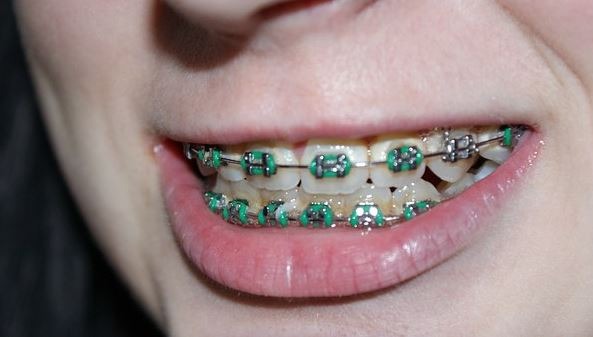When you examine your teeth, it’s clear that there are issues that brushing and flossing will not resolve. Your problems aren’t related to your teeth’s health or oral hygiene. Your difficulty is caused by orthodontic concerns. Braces are an excellent approach to address issues such as gaps, crowding, and a misaligned bite.
Orthodontic therapy typically takes at least two years. Two and a half years is the best time frame. If the orthodontic difficulties are serious, some patients may need up to four years.
Is it Possible to Remove Braces Before They Are Due?
It will take time for orthodontic treatment to produce the best outcomes. To achieve safe and successful results, the teeth must be moved gradually. The main goal is to make sure your teeth and bite are in the right place. Any changes made too hastily may create more harm than good. Too soon after orthodontic treatment is removed, the teeth are more likely to shift back into their previous position.
If you’re like most patients, you’ll want to find a technique to speed up your orthodontic treatment and get to the finish line sooner. Your orthodontist will ultimately give you a timeline of how long your treatment will take.
What happens if I remove my Braces early?
The real reason you need braces is to improve the way your teeth fit and work together, not to improve your smile. Misaligned teeth can cause severe jaw difficulties, migraines, and tooth grinding by shifting your bite in an unhealthy, dysfunctional way. It’s good to have them straight and lovely, but that’s not the main purpose.
Teeth migrate slowly through the bone, so keep it in mind. Teeth are expected to feel loose for a while they shift, and braces are required to keep them in place until the bone surrounding the roots fills in, preventing them from shifting back. Orthodontists work in phases to complete these procedures. If you want them taken out early, you’ll need to fill out an early removal of braces consent form.
Should you Attempt to Remove your Braces on Your own?
Only a qualified orthodontist should remove braces. They have the necessary tools to properly remove your brackets and wires. If you try to remove your braces at home, you risk injuring yourself because many of the pieces are fairly sharp.
There have been multiple reports of persons consuming brace components by accident. Brackets and orthodontic wires can break and fall off teeth, causing harm if eaten or breathed. This can result in a medical emergency. While this has only happened in a few instances in an orthodontist’s office, you’ll be more secure when you leave it to a specialist.
Will Teeth Move Back After Braces?
Is it common for teeth to shift after braces have been applied? Yes, to put it succinctly. After braces, teeth often shift back into their natural positions, and whether your top or bottom teeth shift more depends on your mouth’s particular anatomy. Fortunately, as your braces or aligner treatment nears completion, you and your orthodontist will take steps to prevent this from happening.
If your teeth begin to move gradually in the weeks after your braces are removed, your family orthodontist may be able to make minor adjustments with the help of your retainer. If your orthodontist can’t make the necessary modifications with just your retainer, he or she may opt for Invisalign clear aligners to perfect your smile. That said, if you detect your teeth shifting, you should contact your orthodontist right away. So they can deal with the problem as soon as feasible and make tiny changes before the teeth shift too much.
Why Do Braces Cause Teeth Shift?
Our teeth have a hard, rigid exterior, but flexible ligaments hold them together beneath. Because these ligaments are flexible, braces or aligners can force your teeth into place. Individuals, on the other hand, can change their thoughts later due to their flexibility. Once the straightening treatment is completed, your teeth will no longer be under strain. As a result of the sudden removal of support, your teeth may shift and settle back into their normal places. Your mobility will be determined by your teeth and the therapy you received.
The ligaments that hold your teeth in place get softer as you straighten them. After your braces are removed, these fibers stay loose, and your teeth will begin shifting nearly immediately – though it won’t be noticeable until later. You’ll almost certainly be given a retainer after your procedure is completed to keep your teeth from shifting. It’s critical to follow the instructions on your retainer to keep your newly straightened smile.
How to Tell if Your Braces Have Caused Your Teeth to Shift
Smiling in the mirror or comparing your teeth to old images is the quickest way to identify if your teeth are changing. It’s critical to identify small changes so you can move quickly to remedy them before it’s too late. Other symptoms that your teeth may be shifting include:
Retainers are too tight: Retainers should not be too tight because they are custom-made to fit the exact shape of your teeth. Your teeth have shifted if they do.
Teeth become sensitive: When your teeth shift out of alignment, they can create small gaps and tight spaces where food can become lodged. Bacteria can accumulate in these crevices, causing cavities and gum disease, as well as increased sensitivity and pain.
Smile has evolved: When you look in the mirror, do you notice any new gaps or overlapping teeth? If you notice that your grin is different than usual, it’s likely that your teeth are shifting, and you should seek prophylactic treatments.
Straightening your teeth can improve the appearance of your smile as well as the health of your mouth. While teeth shifting after braces is common, it’s also critical to follow your orthodontist’s instructions to maintain your teeth and smile in place.

